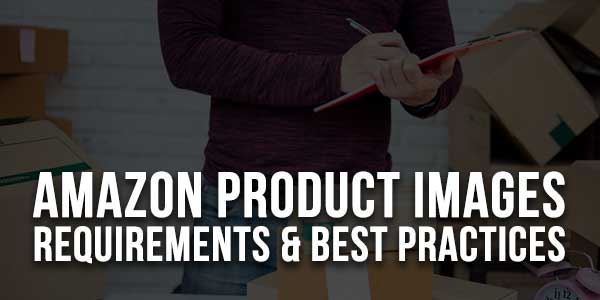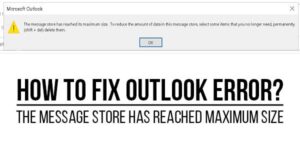
In the competitive world of e-commerce, the significance of high-quality product images on Amazon cannot be overstated. Not only do compelling visuals catch the shopper’s eye, but they also play a crucial role in Amazon search engine optimization (SEO). In this post, we will explore the essential requirements and best practices for optimizing your Amazon product images to improve visibility, attract potential customers, and boost sales.
Table of Contents
1.) Image Requirements On Amazon:
Amazon has specific guidelines for product images to maintain a consistent and user-friendly shopping experience. Ensure your images adhere to the following requirements:
- Image Size: Follow the recommended pixel dimensions for the main image and additional images.
- File Format: Use JPEG, PNG, GIF, or TIFF formats.
- Background: Maintain a pure white background without any additional objects.
- Image Quality: High-resolution images that are sharp and clear.
- Image Types: Include various image types such as the main image, lifestyle images, and infographics.
2.) Main Image Optimization:
The main product image is the first thing potential customers see. Optimize it for both users and search engines by:
- Image Clarity: Ensure the main image is crystal clear, displaying the product from different angles.
- Size Consistency: Keep the main image consistent with the recommended size to maintain a professional appearance.
- Zoom Functionality: Enable the zoom feature to allow customers to scrutinize product details.
3.) Alt Text Optimization:
Alt text is crucial for SEO as it helps search engines understand the content of your images. Follow these tips:
- Be Descriptive: Write clear and concise alt text describing the product and its key features.
- Include Keywords: Integrate relevant keywords naturally into the alt text.
- Avoid Keyword Stuffing: Ensure the alt text sounds natural and not forced.

4.) Additional Images And Lifestyle Shots:
Showcasing Features:
Supplemental images play a crucial role in highlighting the key features and benefits of your product. By including close-up shots and detailed images, customers can get a comprehensive understanding of what sets your product apart. Showcasing features aid in building customer trust and may influence their purchasing decision positively.
Demonstrate Use Cases:
Lifestyle shots provide customers with a visual representation of how the product fits into their daily lives. For example, if you’re selling outdoor furniture, a lifestyle image might show a family enjoying a meal in the backyard. This helps potential buyers envision the product’s practicality and encourages them to see it as a valuable addition to their lifestyle.
Infographics For Information:
Infographics offer a visually appealing way to convey technical specifications, dimensions, and other critical details about the product. Instead of overwhelming customers with text, an infographic can present information in a digestible format, making it easier for them to absorb important details at a glance. This can be particularly useful for products with complex features.
Ready To Elevate Your Product Presence On Amazon?
Explore our comprehensive guide to optimizing product images for maximum impact. Enhance visibility, captivate customers, and boost sales with proven strategies. Elevate your Amazon listings today!
5.) Image Naming And File Structure:
Descriptive File Names:
Optimizing image file names involves renaming them with clear, descriptive keywords related to the product. This not only helps with SEO by making the images more discoverable but also contributes to a more organized file structure. For instance, instead of a generic name like “IMG12345.jpg,” consider renaming it to something like “brand-product-name-feature.jpg.”
Organized Folders:
Maintaining a well-organized folder structure for your images is essential for efficient management. Group images into folders based on categories, product types, or any other logical structure. This organization not only aids in your workflow but also makes it easier for search engines to index your images, potentially improving your overall site SEO.
6.) Mobile-Friendly Images:
Responsive Design:
With the increasing use of mobile devices for online shopping, it’s crucial to optimize your images for a responsive design. This ensures that your product images display well on various screen sizes, providing a seamless and visually pleasing experience for mobile users. Responsive images contribute to a positive user experience, reducing bounce rates and potentially improving your search engine rankings.
Mobile Zoom Function:
Testing and ensuring that the zoom functionality works seamlessly on mobile devices is vital. Many customers rely on Zoom features to scrutinize product details before making a purchase decision. If this feature is clunky or non-functional on mobile devices, it could negatively impact the user experience and, consequently, your conversion rates.
7.) Regularly Update Images:
Keeping your product images fresh is more than just a cosmetic update. Regular updates signal to customers that your product is current and actively maintained. This instills confidence in potential buyers, indicating that your business is attentive to details and dedicated to providing accurate representations of your products. Additionally, consistently updating images keeps search engines engaged, as they recognize that your content is regularly refreshed, potentially positively impacting your search rankings.
Conclusion:
Optimizing your Amazon product listing optimization services is not just about meeting platform requirements; it’s about creating a visually appealing and informative experience for potential buyers. By following these requirements and best practices, you can enhance your product listings, improve SEO, and ultimately increase your chances of driving sales on the Amazon marketplace.

 About the Author:
About the Author:
















Be the first to write a comment.